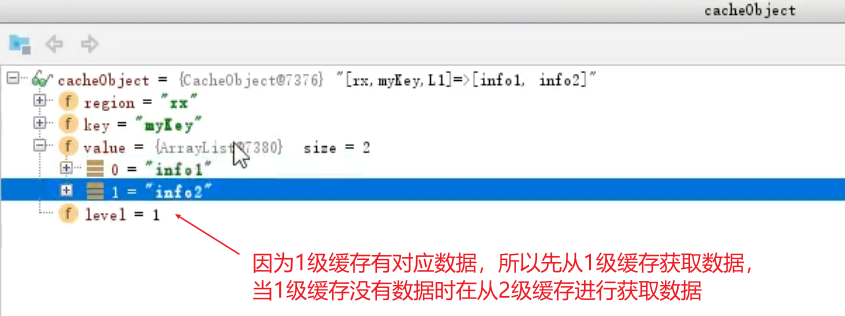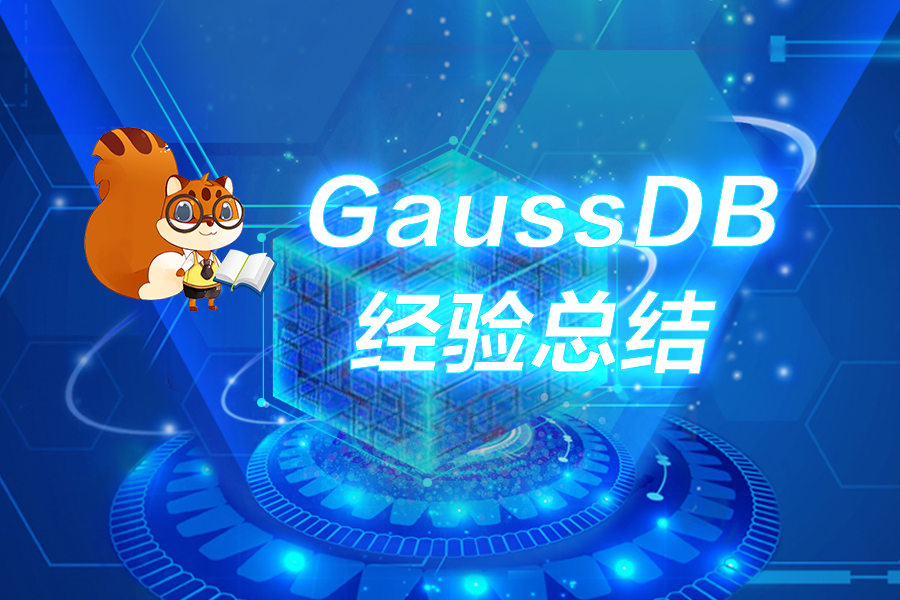
J2Cache的学习
J2Cache的学习此教程基于黑马程序员Java品达通用权限项目,哔哩哔哩链接:https://www.bilibili.com/video/BV1tw411f79E?p=97一、j2cache介绍j2cache是OSChina(开源中国)目前正在使用的两级缓存框架。j2cache的两级缓存结构:L1: 进程内缓存 caffeine/ehcacheL2: 集中式缓存 Redis/Memcached
J2Cache的学习
此教程基于黑马程序员Java品达通用权限项目,哔哩哔哩链接:https://www.bilibili.com/video/BV1tw411f79E?p=97
一、j2cache介绍
j2cache是OSChina(开源中国)目前正在使用的两级缓存框架。
j2cache的两级缓存结构:
- L1: 进程内缓存 caffeine/ehcache
- L2: 集中式缓存 Redis/Memcached
j2cache其实并不是在重复造轮子,而是作资源整合,即将Ehcache、Caffeine、redis、Spring Cache等进行整合。
由于大量的缓存读取会导致L2的网络成为整个系统的瓶颈,因此L1的目标是降低对L2的读取次数,因为L1是进程内的,读取数据没有网络开销,性能更高
该缓存框架主要用于集群环境中,单机也可使用,用于避免应用重启导致的ehcache缓存数据丢失。
j2cache从1.3.0版本开始支持JGroups和Redis Pub/Sub两种方式进行缓存事件的通知。
数据读取顺序 -> L1 -> L2 -> DB(数据库)
使用j2cache需要导入的maven坐标:
<dependency>
<groupId>net.oschina.j2cache</groupId>
<artifactId>j2cache-spring-boot2-starter</artifactId>
<version>2.8.0-release</version>
</dependency>
<dependency>
<groupId>net.oschina.j2cache</groupId>
<artifactId>j2cache-core</artifactId>
<version>2.8.0-release</version>
<!-- 排除 -->
<exclusions>
<exclusion>
<groupId>org.slf4j</groupId>
<artifactId>slf4j-simple</artifactId>
</exclusion>
<exclusion>
<groupId>org.slf4j</groupId>
<artifactId>slf4j-api</artifactId>
</exclusion>
</exclusions>
</dependency>
二、j2cache入门案例
第一步:创建maven工程j2cache_demo并配置pom.xml文件
<?xml version="1.0" encoding="UTF-8"?>
<project xmlns="http://maven.apache.org/POM/4.0.0"
xmlns:xsi="http://www.w3.org/2001/XMLSchema-instance"
xsi:schemaLocation="http://maven.apache.org/POM/4.0.0
http://maven.apache.org/xsd/maven-4.0.0.xsd">
<modelVersion>4.0.0</modelVersion>
<parent>
<groupId>org.springframework.boot</groupId>
<artifactId>spring-boot-starter-parent</artifactId>
<version>2.2.2.RELEASE</version>
<relativePath/>
</parent>
<groupId>cn.itcast</groupId>
<artifactId>j2cache_demo</artifactId>
<version>1.0-SNAPSHOT</version>
<dependencies>
<!-- web依赖 -->
<dependency>
<groupId>org.springframework.boot</groupId>
<artifactId>spring-boot-starter-web</artifactId>
</dependency>
<!-- j2cache依赖 -->
<dependency>
<groupId>net.oschina.j2cache</groupId>
<artifactId>j2cache-spring-boot2-starter</artifactId>
<version>2.8.0-release</version>
</dependency>
<!-- j2cache依赖 -->
<dependency>
<groupId>net.oschina.j2cache</groupId>
<artifactId>j2cache-core</artifactId>
<version>2.8.0-release</version>
<!-- 排除 -->
<exclusions>
<exclusion>
<groupId>org.slf4j</groupId>
<artifactId>slf4j-simple</artifactId>
</exclusion>
<exclusion>
<groupId>org.slf4j</groupId>
<artifactId>slf4j-api</artifactId>
</exclusion>
</exclusions>
</dependency>
</dependencies>
</project>
第二步:创建application.yml
server:
port: 9000
# redis 通用配置, 不同的环境,需要配置不同的链接信息,
# 只需要将这段信息复制到具体环境的配置文件中进行修改即可
# 如:复制到pd-auth-server-dev.yml中将数据库名和ip改掉
pinda:
redis:
ip: 127.0.0.1
port: 6379
password:
database: 0 # 使用0号数据库
spring:
cache:
type: GENERIC
redis:
host: ${pinda.redis.ip}
password: ${pinda.redis.password}
port: ${pinda.redis.port}
database: ${pinda.redis.database}
j2cache:
# config-location: /j2cache.properties
open-spring-cache: true
cache-clean-mode: passive
allow-null-values: true
redis-client: lettuce #指定redis客户端使用lettuce,也可以使用Jedis
l2-cache-open: true #开启二级缓存,false则表示只使用一级缓存
# 事件通知的机制,j2cache从1.3.0版本开始支持JGroups和Redis Pub/Sub两种方式进行缓存事件的通知。
# 此处我们使用基于redis的发布订阅模式来通知缓存的各个节点来进行缓存数据的同步(由j2cache进行实现,我们写上配置即可)
broadcast: net.oschina.j2cache.cache.support.redis.SpringRedisPubSubPolicy
# broadcast: jgroups
L1: #指定一级缓存提供者为caffeine
provider_class: caffeine
L2: #指定二级缓存提供者为redis
provider_class: net.oschina.j2cache.cache.support.redis.SpringRedisProvider
config_section: lettuce
sync_ttl_to_redis: true
default_cache_null_object: false
serialization: fst
caffeine:
properties: /caffeine.properties # 这个配置文件需要放在项目中
# lettuce是redis的一个客户端,也可以使用jedis,都是用来操作redis的java客户端
lettuce:
mode: single
namespace:
storage: generic
channel: j2cache
scheme: redis
hosts: ${pinda.redis.ip}:${pinda.redis.port}
password: ${pinda.redis.password}
database: ${pinda.redis.database}
sentinelMasterId:
maxTotal: 100
maxIdle: 10
minIdle: 10
timeout: 10000
第三步:创建/resources/caffeine.properties文件
#########################################
# Caffeine configuration
# [name] = size, xxxx[s|m|h|d]
#########################################
# 默认区域,最多可以放入2000个缓存对象,缓存2个小时的时间,s表示秒,m分钟,h小时,d天
default=2000, 2h
# 定义的第二个缓存的区域,名字任意,此处为rx,最多存放50个缓存对象,缓存2个小时,时间到就会自动清除缓存
rx=50, 2h
第四步:创建MyController
package cn.itcast.controller;
import net.oschina.j2cache.CacheChannel;
import net.oschina.j2cache.CacheObject;
import org.springframework.beans.factory.annotation.Autowired;
import org.springframework.web.bind.annotation.GetMapping;
import org.springframework.web.bind.annotation.RequestMapping;
import org.springframework.web.bind.annotation.RestController;
import java.util.ArrayList;
import java.util.List;
@RestController
@RequestMapping("/cache")
public class MyController {
private String key = "myKey"; // 定义缓存的key
private String region="rx"; // 缓存的区域
// 我们使用j2chache提供的CacheChannel来操作我们的缓存数据
/*
* 为什么我们没有配置就可以直接注入CacheChannel,因为我们导入了j2cache的坐标,他会帮我们自动完成配置
* 自动加载我们在application.yml中的配置,把CacheChannel实例化出来,并且载入spring容器
* */
@Autowired
private CacheChannel cacheChannel;
// 放入缓存(一级缓存和二级缓存都会放入)
@GetMapping("/getInfos")
public List<String> getInfos(){
CacheObject cacheObject = cacheChannel.get(region, key);
if(cacheObject.getValue() == null){
//缓存中没有找到,查询数据库获得
List<String> data = new ArrayList<String>();
data.add("info1");
data.add("info2");
//放入缓存,指定区域,key,数据
cacheChannel.set(region,key,data);
return data;
}
return (List<String>) cacheObject.getValue();
}
//清理指定缓存(一级缓存和二级缓存都会清理)
@GetMapping("/evict")
public String evict(){
cacheChannel.evict(region,key);
return "evict success";
}
//清理指定区域的缓存(会把整个区域的缓存进行清理掉,(一级缓存和二级缓存都会清理))
@GetMapping("/clear")
public String clear(){
cacheChannel.clear(region);
return "clear success";
}
//检测缓存数据是否存在
@GetMapping("/exists")
public String exists(){
boolean exists = cacheChannel.exists(region, key);
return "exists:" + exists;
}
// 检测指定的缓存数据是从哪一级缓存获取到的,如果两级缓存都没有数据,则返回为0
@GetMapping("/check")
public String check(){
int check = cacheChannel.check(region, key);
return "level:" + check;
}
}
第五步:创建启动类
package cn.itcast;
import org.springframework.boot.SpringApplication;
import org.springframework.boot.autoconfigure.SpringBootApplication;
@SpringBootApplication
public class J2CacheApp {
public static void main(String[] args) {
SpringApplication.run(J2CacheApp.class,args);
}
}
注意:由于我们当前第二级缓存使用的是redis,所以需要启动redis服务才能正常运行入门案例。
启动项目,访问地址:http://localhost:9000/cache/getInfos ,使用redis可视化工具RDM可以发现redis中已经缓存了数据:

且获取数据首先是从一级缓存中进行缓存,

重启项目,由于j2cache的一级缓存(caffeine)是进程级缓存,重启后一级缓存消失。但是二级缓存(redis)的数据还存在,再次访问 http://localhost:9000/cache/getInfos,通过debug断点调试可以看到程序从redis中获取了缓存数据。

三、starter定制及使用
我们可以开发一个starter,名字为pd-tools-j2cache,我们的应用直接引入其maven坐标并配置j2cache的配置文件就可以将CacheChannel对象直接注入到我们的程序中进行缓存数据操作了。具体使用过程和入门案例一致,只需要更换j2cache的maven坐标为pd-tools-j2cache的maven坐标即可。
starter模块的定制可以参考b站链接:https://www.bilibili.com/video/BV1tw411f79E?p=103&spm_id_from=pageDriver,此处我们不做过多叙述
喜欢请关注我
至此,我们的J2Cache的学习就讲解完毕了。喜欢我的话可以关注我的微信公众号 我爱学习呀嘻嘻 ,不定期分享各类资源哦。

更多推荐
 已为社区贡献2条内容
已为社区贡献2条内容









所有评论(0)